Improvised Explosive Device - the ever growing threat in peacekeeping.
Improvised Explosive Device (IED) is an unconventional form of explosive device which is mostly used in lethal operations. The British Army devised the name ‘IED’ to indicate the explosives used by Irish Republican Army during 1970s. Those earlier IEDs were made of fertilizers mixed up with military explosives. IEDs are often fabricated with inflammable chemicals to destroy the target material. This explosive device is commonly used by the terrorists groups across the globe. Due to its capability of mass destruction with minimal production cost, IED is one of the most used explosives in recent terrorist attacks.
I've discussed about 'Energy Weapons' in previous series of blogs. The series went through detailed articles about Particle Beam, Microwave & Laser Based weapons. Lets discuss about Improvised Explosive Devices today.

IED instruments, credit: US Marine Corps, author: Cpl. Reece Lodder, license: public domain
IED Components
IEDs can be made in different forms and sizes. The type of explosive material, destruction level, operation range and several other factors are taken into account when an IED is made. IEDs can be fabricated in different forms like pipe bombs, land mines etc. However, most of the IEDs have some basic components as described below,
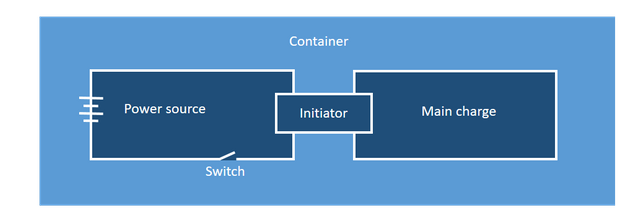 Figure 2: IED components, credit: author.
Figure 2: IED components, credit: author. Power source
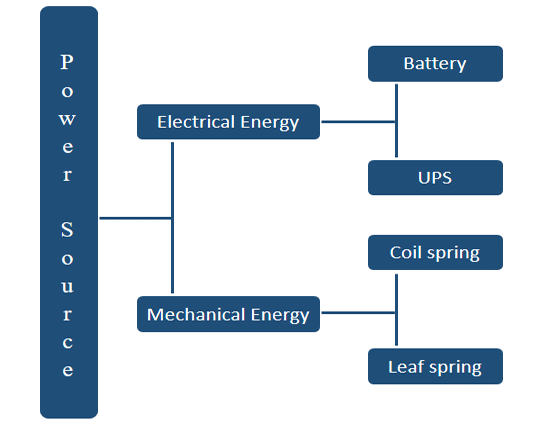 Figure 3: IED power source, credit: author.
Figure 3: IED power source, credit: author. Power source works as the energy storage which requires to fire the detonator of the IED. Most typical IED power source is battery, it delivers the required power at instance. Alternating current is also used where relatively larger amount of energy is required. Some handmade IEDs are often compacted with mechanical power source which in turn supplies the initial energy to the detonating component. Figure 2 shows classification of IED power source.
Main charge
The explosive component of an IED is called main charge. The destruction capability of an IED is mostly dependent on its main charge. The most common forms of IED explosive components are presented in Table 1.
| Explosives | Common Form | IED Use |
| Ammonium Nitrate & Fuel Oil (ANFO) | Solid | Oklahoma City bombing |
| Triacetone Triperoxide (TATP) | Crystalline solid | London bombing |
| Semtex | Plastic solid | Irish Republican Army bombing |
| Urea Nitrate | Crystalline solid | World trade center bombing in 1993 |
| Smokeless Powder | Solid | Olympic Park bombing |
Initiator
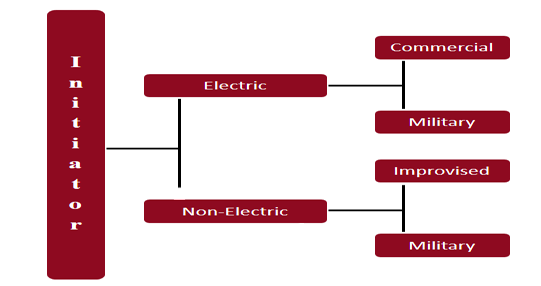 Figure 4: Initaitor of IED, credit: author.
Figure 4: Initaitor of IED, credit: author. The initiator device is used to start the explosion of the device. In case of mass destructive IEDs, a booster device is attached with the initiator. The electro-mechanical energy is passed towards the main charge using initiator device.
Switch
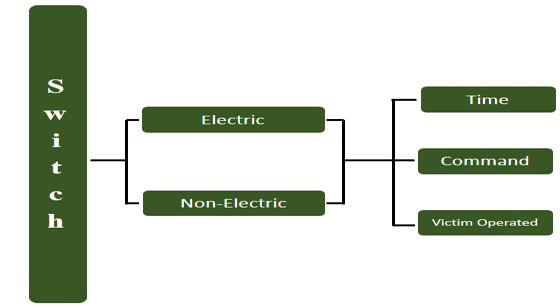 Figure 5: Switch of IED, credit: author.
Figure 5: Switch of IED, credit: author. Switches are used to trigger IEDs properly. This switch enables the operation of the explosive device. IED switches can classified into time based, command based and victim triggered operations. IED switch types are shown in Figure 4.
Container
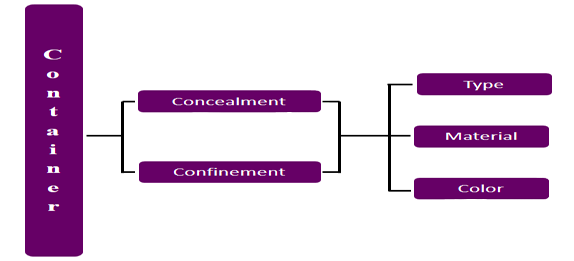 Figure 6: Container of IED, credit: author.
Figure 6: Container of IED, credit: author. The main components of an IED is carried by a container. It is designed to keep all the components together. It also offers better mobility. Buckets, briefcase, tires, vests and even vehicles can be used as an IED container.
IED Operations
IED violence has become a major threat in recent times. The easier construction technique with massive destruction capability make IEDs one of the most used explosive in terrorist attacks. An IED operation is carried out in several steps. Though every group of insurgents have their different strategies, IED attacks can be classified into three comprehensive stages:
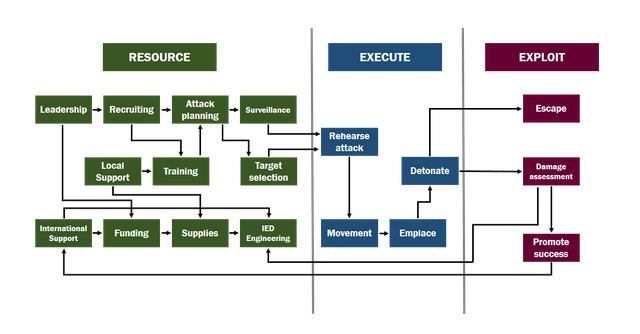
Figure 7: IED operation network, credit: author.
Resource
Resourcing activities involves primary planning to technical support and production process. Local and international leadership among the groups is also a salient part of resourcing stage. Different branches of the resourcing group collect the funds, recruit technical workforce, determine target and build strategies for the operation.
Execute
Surveillance process initiates the execution stage followed by selection of target and detonation of the IED. This stage also includes rehearsals, emplacement and monitoring process. The execution stage concludes on detonating the explosive in specific target location.
Exploit
Exploit phase includes escaping of executioners, damage assessment and promoting the success of the attack. Executing another secondary attack on follow-on forces often also be carried out by the attacking group. This stage may also involves propaganda campaigns against government or certain security forces.
Critical Functions of IED Operations
The IED operation network is composed of several critical functions. From developing the ideology to the execution of the planning, these critical functions are considered to be the core part of IED operation network. Critical functions of an IED operation can be described as followed:
Leadership
Leadership is one of the most vital functions of IED operation network. A central source of authority with specific level of control inside the unit is an essential part of the operation.
Ideology
Precise ideology is one of the crucial functions of IED operations. Unifying the vision of the operation along with providing specific propaganda for the operation is much dependent on ideology.
Fighters
Fighters are chosen from activists according to their capability and personal grievances. The recruitment of fighters and training is considered to be a crucial part of an IED operation. Experienced trainers are chosen and the recruits have access to the resources.
Weapons
Manufacture, distribution and employment of weapons are also an important part of IED operations. Skilled technical personnel and specially trained workforce deal with this critical function of the operation.
Communication
Communication among the activists as well as with the global media is another crucial part of IED operation. The propaganda and visions are spread through proper communication procedures.
Finance
Collecting funds from the donors and utilizing them in effective manner is the next critical function. Some front end companies works for the potential fund raising and distribution of the funds among the network.
Intelligence
Professional personnel are assigned with the task of gathering information about target location, building communication among the units and analyzing the aftermath of the operation. Intelligence team is one of the core function of an IED operation.
Effect of IED Operations
IED violence has becoming a serious security issue in recent years. IEDs are responsible for about 105,071 casualties in last five years that is 59% of the total casualties from explosive operations [Source]. IEDs are spreading devastating threats in about half of the world’s countries. IEDs are often used against humanitarian workers across the countries that in terms hampers the peace keeping efforts in that particular region. The effect of an IED violence can be described as below:
Health Issues
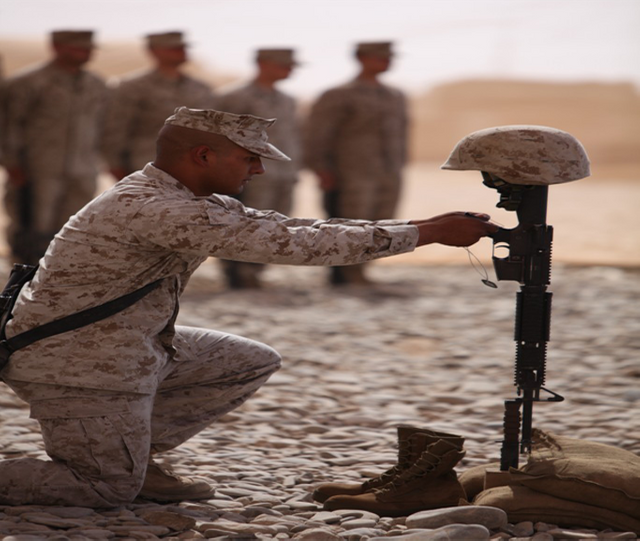 Figure 11: Memorial service held to honor US Marine Corps member Cpl. Jeffrey Standfest who was killed by an IED, credit: US Marine Corps, license: public domain
Figure 11: Memorial service held to honor US Marine Corps member Cpl. Jeffrey Standfest who was killed by an IED, credit: US Marine Corps, license: public domainIED explosion can cause serious casualty among the victims. Even the smallest IED violence can injure people severely within its blast zone. The injuries on IED violence is much dependent on the size and effectiveness of the IED, the environment of the blast zone and also on the crowd population in the region. The most common injuries from an IED violence are damage to lungs or abdomen due to overpressure of the blast, impact injuries like fracture, amputation and also thermal injury like burns to the different parts of the body. Any of these injuries can led to death in certain cases.
Infrastructural Damage
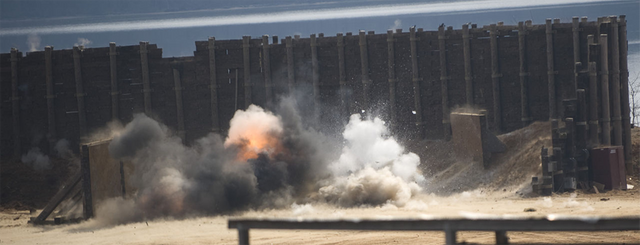 Figure 12: IED detonation, credit: US Navy, license: public domain
Figure 12: IED detonation, credit: US Navy, license: public domainInfrastructural damage is another big threat of IED violation. IEDs can be powerful enough to damage and even destroy buildings, transportation spots and building systems. It can also disrupt municipal services like water and electricity supply. Operations in public gathering like stadium, concert venue can lead to immense amount of fatality. Military transportation systems are also being targeted by IEDs to interrupt military operations in specific region.
Secondary Hazard
IED explosions can initiate secondary hazards like ignition on flammable substances which can lead to massive damage in the blast radius. The socio-economic structure of the region may also be affected by an IED violence.
An overview of IED violence in recent years from the 2014 database of Action on Armed Violence (AOAV) [Source] is shown in Table 2 below:
| Country | No. of IED Incidents | Civilian Deaths | Total Casualties |
| Iraq | 1,596 | 5,671 | 27,782 |
| Pakistan | 568 | 2,092 | 10,016 |
| Afghanistan | 932 | 1,911 | 8,005 |
| Syria | 218 | 1,233 | 5,586 |
| Nigeria | 107 | 687 | 2,101 |
Conclusion
IED operations present a complex, multi-faceted threat to the global peace keeping movement. Having the impacts of reaching beyond physical damage, IED operations leads to long term effect on livelihood and also threatening to humanitarian activities. IED violence can cause serious fatality like ‘Oklahoma Bombing’ having deaths of as many as 169 or ‘Madrid Train Attack’ which took away 191 lives leaving thousands of injured victims. Military and law enforcing agencies across the world are continuously trying to counter the IED operations. Ongoing Counter-Improvised Explosive Device (C-IED) operations are expected to reduce the ever growing threat of IED violence in near future.
References
Many thanks to @scienceangel for her help in mentoring this article.
If you are interested in science, technology and mathematical things on steem blockchain, consider joining the 'steemSTEM' community. More details about steemSTEM can be found here.
 gif credit: @foundation
gif credit: @foundation
nothing to say about this great article, thank you
Thanks man! :)
This post has been voted on by the steemstem curation team and voting trail.
There is more to SteemSTEM than just writing posts, check here for some more tips on being a community member. You can also join our discord here to get to know the rest of the community!
@ied please contact me on facebook... fb.com/aminul.friend
lol. :D